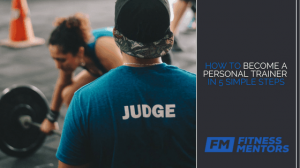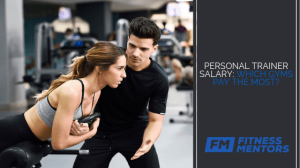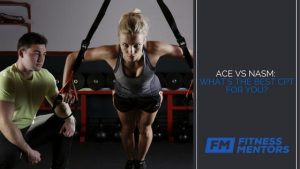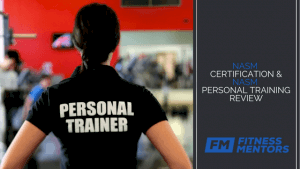The 5 Hardest ACE CPT Test Questions
(and Answers)The ACE CPT Exam is known for being one of the most difficult personal training certifications to pass. Out of the almost 800-page textbook they select 150 questions that need to be completed in a three hour time limit.
Table of Contents
ToggleThis can cause major anxiety as knowing what to study can be hard to determine. Not to mention most of the questions come from a single sentence hidden deep within each chapter [our Audio Lectures and Study Guide help to point these out].
Through teaching the ACE CPT Certification materials at a college level for over 5 years and testing multiple times, we have selected what we believe to be the 5 hardest ACE CPT test questions and have coupled them with the answer and detailed explanation. (This has been updated to reflect the newest version of the ACE CPT Exam, Edition 5)
BONUS!
If you want the head instructor Eddie Lester to text you Free ACE Test questions, study materials and bonus tips:
TEXT “ACE Questions” to 31996.
- A 44-year-old man name Roger comes to you wanting to exercise. After a thorough health-risk appraisal, you learn than his father had diabetes and smoked cigarettes. He quit smoking one year ago and he alternates between exercising on the stationary bike and treadmill 3 days per week for 30-45 minutes per session during his lunch break at work. He has a BMI of 31, Systolic Blood Pressure of 142 mmHg, Diastolic Blood Pressure of 88 mmHg, and a total serum cholesterol of 187 mg/dl. What risk classification is Roger and how many risk factors does he have if any according to ACSM guidelines?
- High risk, 4 factors
- Moderate risk, 4 factors
- Moderate risk, 2 factors
- Low risk, 2 factors
You memorized all of the positive risk factors and classifications right!? It can be a lot to know every single risk factor, as most of the risk factors have more that one component. His father smoked cigarettes which means nothing. He smoked cigarettes but quit one year ago. What was the timeline again for quitting smoking? Six months which means it is not a positive risk factor for Roger. He works out 3 days per week for more than 30 minutes which means he is not sedentary, so no positive risk factor there. He has a BMI of 31, which is over the limit of 30 and is considered a positive risk factor. His systolic blood pressure is 142 which is above the cutoff of 140 so there is another positive risk factor. His total cholesterol is 188 mg/dl which is below the 200 mg/dl cutoff, so no risk factor there. This means there is a total of 2 risk factors. Did you memorize how many risk factors are associated with each risk classification? Well Low Risk is less than two so its not low risk. Moderate Risk is greater than or equal to 2 so that becomes Roger’s risk classification.
Correct Answer: C
Memorize all positive risk factors and their and their determining values including: Age, Family History, Cigarettes, Sedentary, Obesity, Hypertension, Dyslipidemia, Prediabetes and the one negative risk factor High HDL Cholesterol.
[thrive_leads id=’3410′]
- What is the rate of strength loss associated with reversibility?
- A client who stops working out will lose strength at one-quarter the rate that it was gained.
- A client who stops working out will lose strength at one-half the rate that it was gained.
- A client who stops working out will lose strength at the same rate that it was gained.
- A client who stops working out will lose strength at twice the rate that it was gained.
Remember that one statistic, from that from that sentence, in that one paragraph on reversibility? Reversibility discusses how the body loses muscle and strength when no resistance training is being performed. A basic resistance training routine can maintain muscle through aging as well as increase the amount of muscle by 3lbs in three months. Based on Faigenbaum et al., strength is lost at about one-half the rate that it was gained. It is easy for ACE to pick a question like this as it is very relevant to the field, but the likelihood of you memorizing it is low.
Correct Answer: B
- What is the rate of resistance increase for progressing a client with the goal of muscular strength?
- Once the client reaches the terminal number of repetitions increase the load by 5%.
- Once the client reaches the terminal number of repetitions increase the load by 8%.
- Once the client reaches the terminal number of repetitions increase the load by 10%.
- Once the client reaches the terminal number of repetitions increase the load by 15%.
Chapter 10 focuses on teaching you how to develop and progress a training program. Did you happen to memorize how to progress each goal of training? Probably not. It is much easier to memorize information when it is organized in a chart or table, but on the ACE CPT Exam they like to find go into the middle of a paragraph and choose a statistic. Out of 800 pages the ability to find and memorize this specific of information is trying. (That’s why we recommend grabbing our Study Guide for the ACE CPT Exam as we point out what is most important to pass the exam)
Correct Answer: A
- Choose the list of muscles that all externally rotate the shoulder.
- Rhomboid major, Upper trapezius, Posterior deltoid
- Infraspinatus, Subscapularis, Teres major
- Latissimus dorsi, Pectoralis Minor, Teres minor
- Infraspinatus, Teres minor, Posterior deltoid
In our opinion, ACE does not do a good job of showing you what muscles perform what movements. This can be disheartening when the ask questions like this on the exam. The text briefly discusses the rotator cuff and the internal and external rotation test, which when put together can provide the necessary information to get this right. We highly recommend utilizing another resource to learn specific kinesiology, the muscles and their functions, as multiple questions come up around muscular actions and joint motions.
Correct Answer: D
- What is the exercise intensity recommended for a client with hypertension?
- 70-80% of Maximal HR
- 40-50% of VO2 Max
- RPE of 9-13
- 40-60% of VT2
The first thought on this type of question is did you memorize the suggested intensity for each of the Special Populations? Did you memorize the suggested intensity for any of the Special Populations? The second thought is what method of intensity should be used for a client with hypertension? The above question has four different methods for measuring intensity: Max HR, VO2 Max, RPE and VT2. These methods are covered in the Cardiorespiratory Training chapter and can all be used to measure intensity, but the special populations chapter tells you which method to use. The RPE scale is the recommended way to measure intensity for most of the special populations and holds true for hypertension as well.
Correct Answer: C
Alright guys. 5 questions down, 145 to go.
ACE can pull questions from any sentence in the book which makes the 800+ pages daunting for the unmotivated reader (OurAudio Lectures take you page by page through the text and explain everything to make this process easier). Check out more of our tips and tricks to passing the exam by signing up to receive the “5 Secrets to Passing Your ACE CPT Exam”. Also if you need more help we have some great premium materials, like our Practice Tests for the NASM CPT Exam that make this test a breeze. Check them out here. (If you can score above a 136 out of 150 on both of our practice final exams you are ready to test.) Also feel free to give us a call with any questions about your upcoming test (424) 675-0476.

Five Secrets to Passing your ACE-CPT Exam
Featured Posts

How to Become a Personal Trainer in 5 Simple Steps

Personal Trainer in 2020

Personal Trainer Salary

Top 5 Exercise Science Careers






